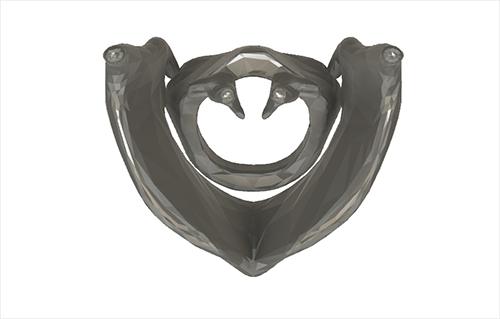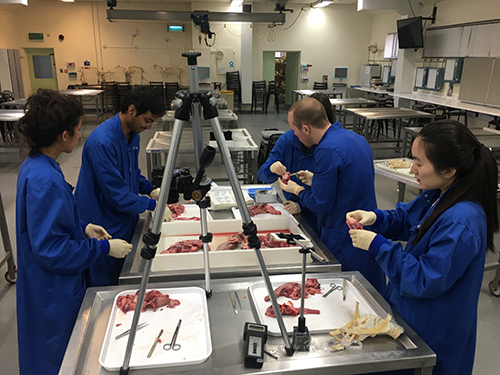Implantable soft robotic devices to treat vocal fold paralysis
In this project with Keren Yue, Alice Haynes, Dr. Hemma Philamore, Dr. Elena Giannaccini, Dr. Andrew T. Conn and Prof. Jonathan Rossiter we investigated the potential for an implantable soft robotic device to treat vocal fold paralysis. We first studied the anatomy of the larynx to understand the muscles, cartilages (shown below), nerves and other tissues involved in the gerneration of voice. In addition to looking at the geometry of components, we were also interested in the movement of the various parts and how that might be affected in the case of both unilateral and bilateral paralysis. Throats of healthy participants were iamged using MRI to help us in this regard. We also dissected porcine cadavers to get a feel for the dimensions involved and the forces required to mvoe the main cartilages.
We then decomposed the movemet into three main axes based on the existing literature on vocalisation. Following this, we looked at multiple mechanisms to recreate the movement of the vocal folds. We constructed a scaled model to use as a test bench for replicating both kinds of paralysis and to test concepts of implantable devices.
We designed and fabricated several designs using bio-compatible materials to be used as implants. Various manufacturing processes such as muli-material 3D printing, moulding and coating were evaluated. Each of the designs was characterised in terms of the force that it could apply, the volumetric change that it could generate and the actuation required. In collaboration with ENT surgeons from University College London, we tested the designs on cadavers. We were able to show that our devices did indeed work to overcome the ill effects of paralysis and generated natural movement of the vocal folds.


Unfortunately, I cannot share more pictures from the work due to medical, legal and ethical issues.
